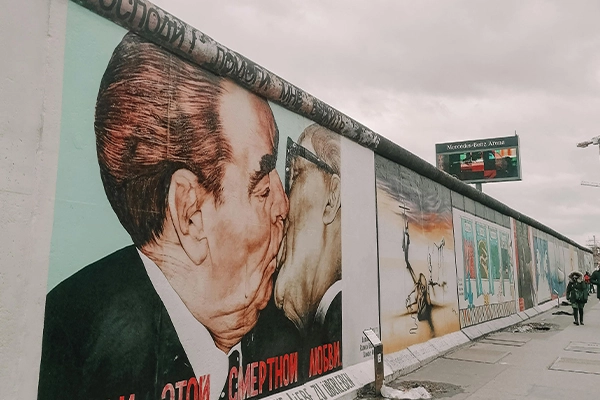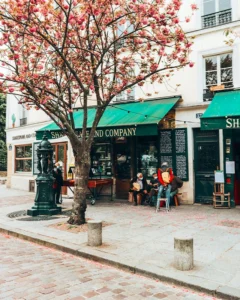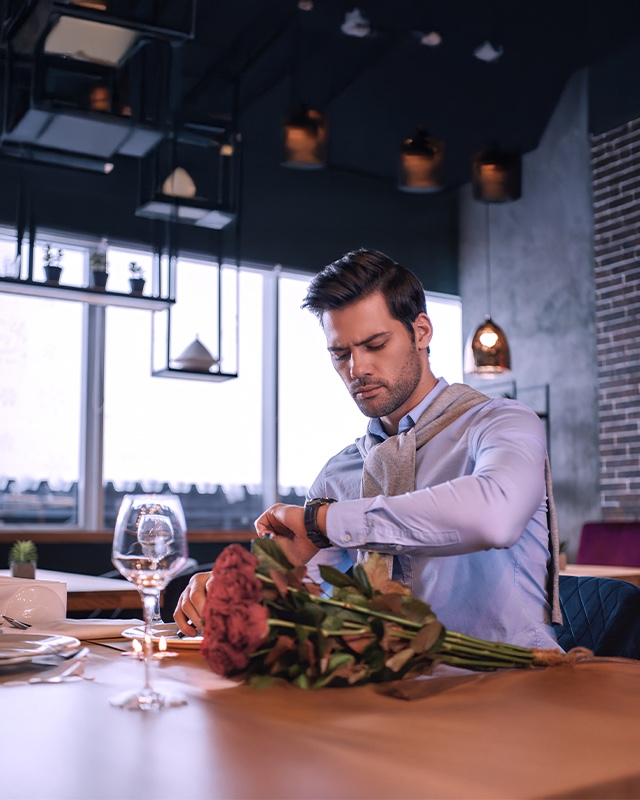When planning a first date, what could be better than an afternoon rich in visual stimulation that also provides a window into the soul of a city, revealing its aspirations, fears, and dreams? In an era where the boundaries between high art and street culture blur like wet paint, the discerning urbanite is increasingly drawn to the raw energy of city walls. The street art safari, a self-guided expedition through the concrete jungle, offers an unparalleled opportunity to engage with the zeitgeist of our times. Far from the sterile confines of traditional galleries, this journey promises an authentic encounter with the pulse of urban creativity.
Lacking a formal route or suggested list of must-see places, the best way to embark on this journey is armed with your smartphone—to capture the work—and an open mind. Navigating the urban gallery, it’s helpful to remember that each piece is a conversation starter—a provocation—and an invitation to engage with your date and the world around you. The ephemeral nature of street art adds an element of urgency to your exploration. What you see today may be gone tomorrow, replaced by a new vision or reclaimed by the relentless march of urban development.
Tradition Meets Subversion
The street art scene in London is a testament to the city’s ability to embrace the new while honoring its rich cultural heritage. From the punk-inspired stencils of the 1970s to the sophisticated murals of today, London’s walls tell a story of constant reinvention.
The East End, particularly the Shoreditch and Brick Lane neighborhoods, is the epicenter of London’s street art scene. Here, the works of international stars like Banksy and Shepard Fairey coexist with pieces by local talents, creating a dynamic dialogue between global and local perspectives.
For those seeking a more curated experience, Leake Street Arches offers a sanctioned space for artists to create without fear of legal repercussions. This ever-changing gallery, located beneath Waterloo Station, showcases the raw energy of London’s graffiti scene.
As you explore the city, keep an eye out for the whimsical creatures of Phlegm, whose intricate black-and-white murals offer a fantastical counterpoint to the urban landscape. His works, often inspired by medieval bestiary, invite viewers to reimagine the city as a realm of myth and legend.
The Cradle of Urban Expression
New York City stands as the undisputed epicenter of street art, a living, breathing canvas that has nurtured some of the most influential voices in the movement. The city’s relationship with street art is as complex and layered as the works themselves, evolving from the gritty tags of the 1970s to the sophisticated murals that now grace entire building facades.

Bushwick has transformed into an open-air gallery in the heart of Brooklyn, with the Bushwick Collective as its crown jewel. Here, international artists converge to create works that challenge, provoke, and inspire. The annual block party in June has become a pilgrimage for art enthusiasts, offering a rare opportunity to witness the creation of new pieces in real time.
For those desiring a more curated experience, a visit to the Bowery Wall is essential. Once home to a Keith Haring mural, this rotating installation showcases some of the most prominent names in contemporary street art. The wall’s current iteration, a powerful commentary on social justice, is a barometer for the issues that resonate with New York’s diverse populace.
As you navigate the Lower East Side, watch for the whimsical characters of Brazilian twins Os Gêmeos, whose distinctive yellow figures have become synonymous with the neighborhood’s artistic renaissance. Their large-scale mural on W.14th Street stands as a testament to the enduring impact of street art on the city’s visual landscape.
A Vibrant Canvas of Cultural Expression
Mexico City stands as a testament to the power of street art as a form of cultural dialogue and urban beautification. The city’s walls are an ever-changing gallery showcasing local and international artists’ talents.
In the trendy neighborhoods of Condesa and Roma, street art flourishes amidst tree-lined streets and Art Deco architecture. Parque México and Parque España in Condesa offer a serene backdrop for impressive murals that blend seamlessly with the natural environment. As you wander through these areas, watch for the works of renowned artists like ROA, whose large-scale animal murals on Calle Atlixco captivate passersby with their intricate details.
With its hipster vibe, Roma boasts an equally impressive array of street art. Calle Colima is a must-visit for art enthusiasts, featuring stunning murals that showcase diverse styles and narratives. The work of artist Curiot on this street is particularly noteworthy, with its mythical creatures and vibrant color palette bringing fantasy to life on concrete.
The Historic Center of Mexico City uniquely juxtaposes colonial architecture and contemporary street art. Regina Street has become a focal point for urban artists, with its colorful murals blending modern aesthetics with traditional Mexican motifs. The Regina Alley, in particular, has transformed into an open-air gallery, showcasing diverse artistic styles and themes.
Near the Isabel la Católica metro station, the El Macro Mural Barrio de las Mujeres stands as a powerful testament to the strength of women in Mexican society, exemplifying how street art can serve as a medium for social commentary and empowerment.
The area around Chapultepec Park and Reforma Avenue presents a different facet of Mexico City’s street art scene. Here, murals adorn the walls near one of the city’s most iconic green spaces, creating a striking contrast between nature and urban creativity. The nearby neighborhoods of La Juárez and Zona Rosa contribute to this artistic landscape, with streets like Hamburgo, Liverpool, and Calle Génova featuring murals that blend modern urban styles with elements of Mexican culture.
When History and Art Collide
Berlin’s street art scene is inextricably linked to its tumultuous history, with the fall of the Berlin Wall catalyzing an explosion of creative expression. The East Side Gallery, a 1.3-kilometer stretch of the former wall, stands as the world’s most extensive open-air gallery and a poignant reminder of the power of art to transcend political boundaries.

Urban Nation in Schöneberg has elevated street art to new heights with its Museum for Urban Contemporary Art near Nollendorfplatz. This innovative space preserves ephemeral works and commissions new pieces, blurring the line between street and institutional art. In 1963, Schöneberg was the epicenter of the political west, motivating John F. Kennedy to choose this area and announce, “Ich bin ein Berliner.” Schöneberg’s affluent past is still visible in ornate housing facades dating back to the Gründerzeit of the 19th century, while also once the center of the decadent and burlesque nightlife of the 1920s. It was here that Marlene Dietrich partied with Christopher Isherwood, and the first gay bar in Germany was founded.
For those seeking an even more immersive experience, the RAW-Gelände complex in Friedrichshain offers a glimpse into Berlin’s thriving underground culture. This former “National Railway Repair Works” yard has been transformed into a sprawling canvas where artists are free to experiment with large-scale works away from the constraints of formal galleries. Berlin has been undergoing a comprehensive transformation process for decades, and the Berlin-Friedrichshain district has developed considerably in recent years. It is home not only to many residents but also offers a variety of urban uses. After being used industrially for over a hundred years, at the beginning of the 2000s, segments of the RAW-Gelände site were used to house artistic, cultural, and commercial institutions.
As you wander through the city, watch for the intricate stencil works of XOOOOX, whose fashion-inspired pieces offer a wry commentary on consumerism and identity. His elusive figures, often found in unexpected corners, serve as a reminder that in Berlin, art is not confined to designated spaces but is an integral part of the urban fabric.
A Legacy of Artistic Rebellion
While its vibrant colors and cultural references characterize Mexico City’s street art scene, Chicago’s urban art landscape tells a different story – one of community activism, cultural identity, and artistic rebellion.
Pilsen, a neighborhood on Chicago’s Lower West Side, stands as a living testament to the power of street art in preserving and celebrating cultural heritage. The murals in this area emerged during the height of the immigration wave and civil rights movement, serving as visual narratives of the Latino immigrant experience.
Spirituality is a recurring theme in Pilsen’s murals, with depictions of Our Lady of Guadalupe appearing frequently. These images serve as religious symbols and powerful representations of justice and love in Mexican culture. Jeff Zimmermann, a Chicago native, often incorporates this iconic figure into his murals, creating powerful statements about immigration and cultural identity.
In contrast to Pilsen’s focus on Latino culture, the South Loop area of Chicago embraces a more diverse, global perspective on street art. The Wabash Arts Corridor has become a hub for international artists, showcasing various styles and themes.Feminist art has found a strong voice in this area, with artists like Tatyana Fazlalizadeh challenging gender stereotypes through their work. The Wabash Arts Corridor also participates in a sister city mural painting project, fostering cultural exchange between Chicago and Casablanca, Morocco. From political statements to whimsical cartoon characters, Chicago’s street art serves as an open conversation engaging all citizens, regardless of race, cultural identity, or gender. It is a visual memoir of neighborhood changes and urban development, reflecting the city’s evolving identity.
As you explore these urban canvases, remember that each mural is more than just paint on a wall—a story, a statement, and a reflection of the city’s soul. Whether wandering through the bohemian streets of Roma in Mexico City or discovering the community-driven art of Pilsen in Chicago, you’re participating in a dynamic dialogue between artists, communities, and the urban landscape.
By embracing this artistic expression, you align with a global movement challenging traditional notions of art ownership and accessibility. The street becomes your museum. Admission is free, and the only dress code—an open mind. So, charge your phone, put on some comfortable shoes, and be willing to get lost in the labyrinthine streets of these urban galleries. Your art safari promises encounters with beauty, provocation, and perhaps even a reflection of yourself in the most unexpected places.








